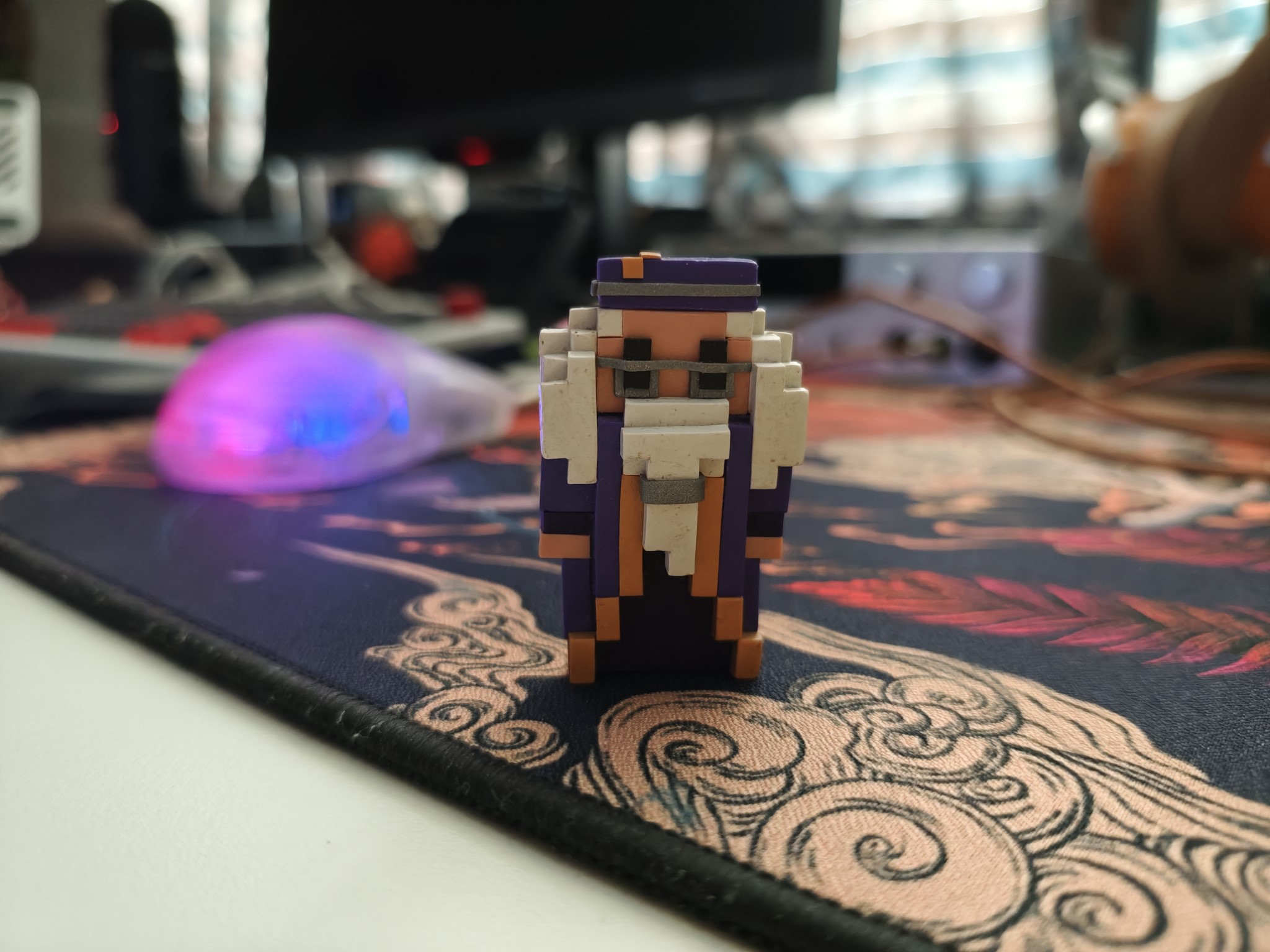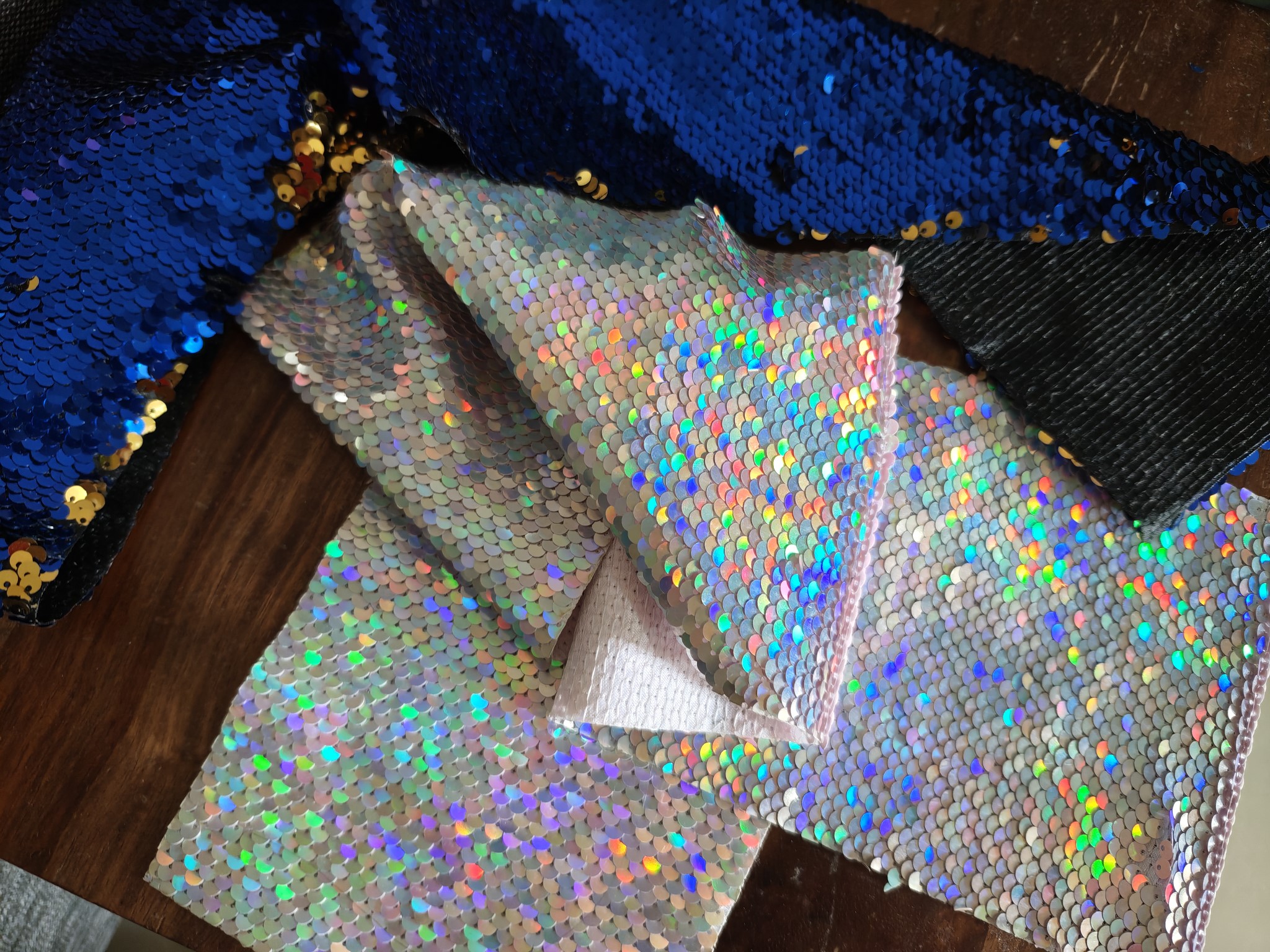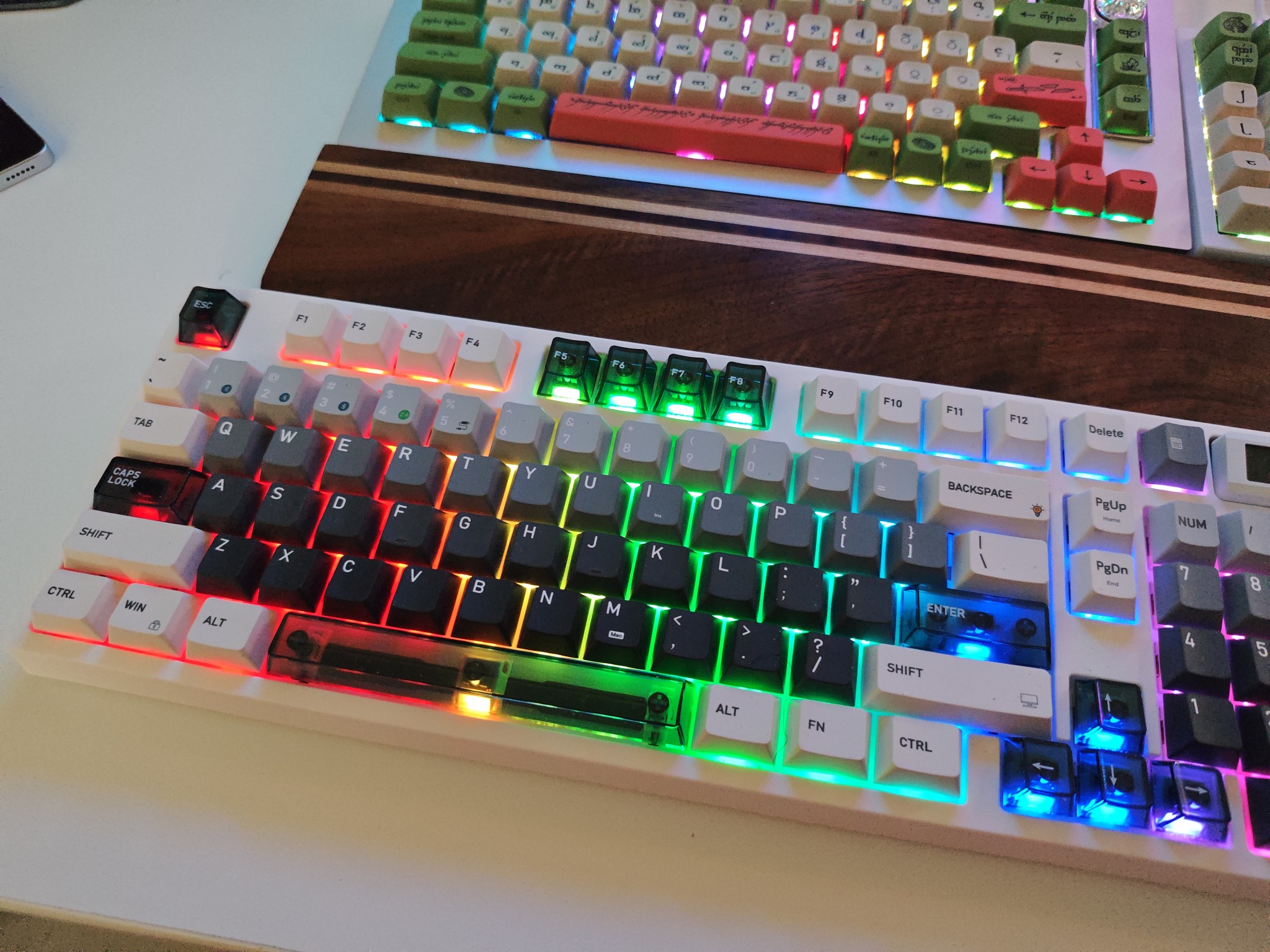Why you can trust Android Central
Our expert reviewers spend hours testing and comparing products and services so you can choose the best for you. Find out more about how we test.
POCO managed to carve out a niche in the budget and mid-range categories by delivering value-focused phones, and devices like the X7 Pro exemplify this trait. If anything, POCO is doing a better job in this area than its Redmi sister brand, and this is clearly evident in the mid-range, where last year’s F6 Pro is still a fantastic choice.
The brand is doing things a little differently in 2025; while it’s still launching the F7 Pro, the focus this year is the F7 Ultra — its most powerful phone yet. The F7 Ultra is a definite statement from POCO that it can produce a phone that can hold its own against the best that OPPO, Vivo, Google, and Honor have to offer.
With the latest Qualcomm silicon, a QHD panel, 5300mAh silicon battery, and 120W charging, the F7 Ultra has a solid foundation, but its the cameras where the device truly stands out. POCO admitted in the past that cameras aren’t the biggest priority for the brand, and while its phones took decent photos, they didn’t measure up to their immediate rivals.
That’s changing with the F7 Ultra; the phone has a 50MP main camera with a Light Fusion 800 imaging module, and it’s joined by a 50MP telephoto with 2.5x optical zoom, and 32MP wide-angle lens. The best part is the price, with the phone debuting at $649, undercutting its rivals by a sizeable amount.
I used the F7 Ultra for just over two weeks, and here’s why I think it is the best value-focused flagship you can buy in 2025.
POCO F7 Ultra: Pricing and availability
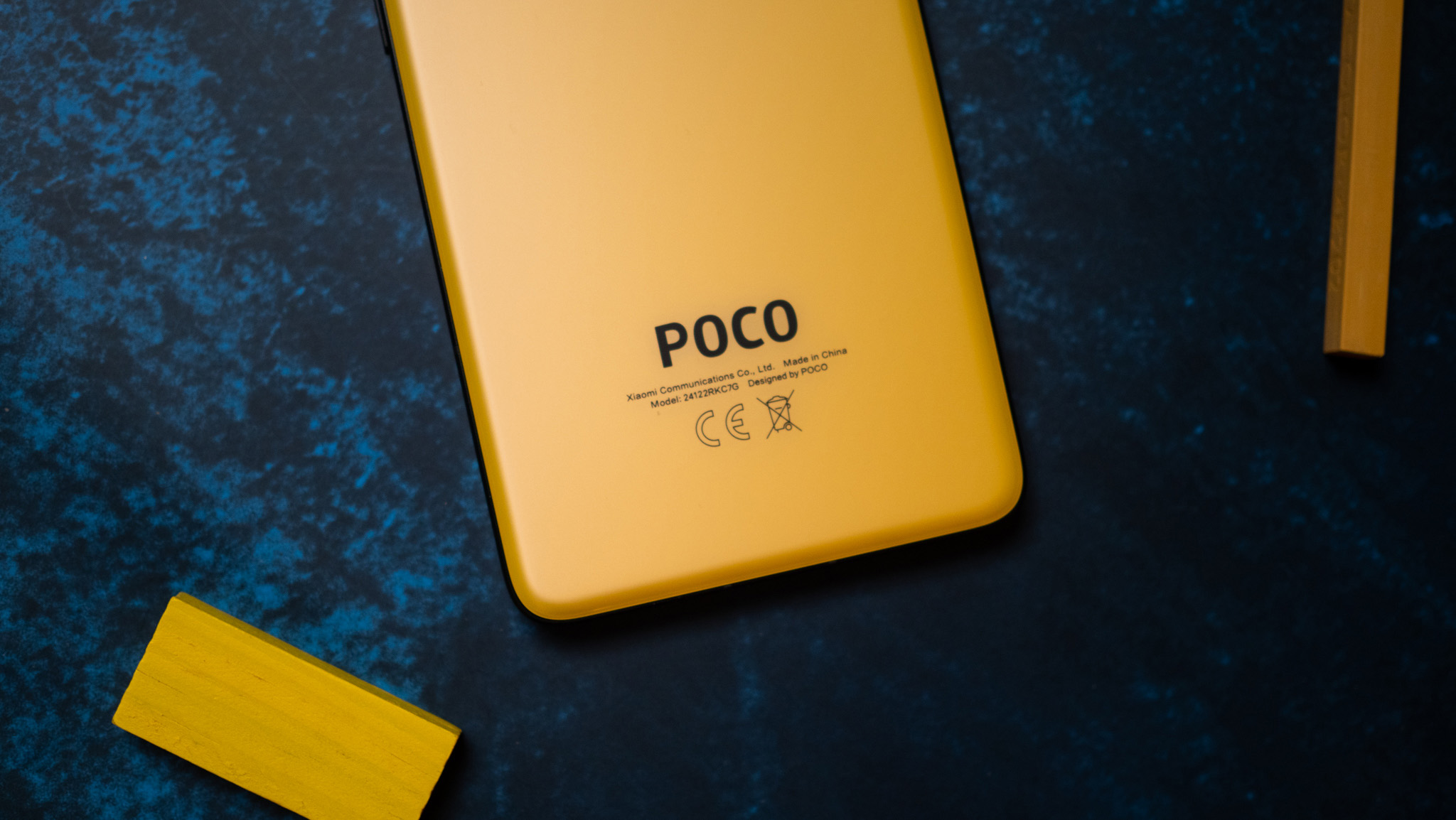
POCO unveiled the F7 Pro and F7 Ultra on March 27, 2025, and both devices will go on sale in select regions in Southeast Asia, the U.K., and other global markets in the coming weeks. The F7 Ultra is sold in yellow and black color variants, and POCO is selling it in two models: the base edition has 12GB of RAM and 256GB of storage, and it costs $649. There’s also a 16GB/512GB model that costs $699.
To incentivize the launch, POCO is selling the 12GB/256GB F7 Ultra at $599, and the 16GB/512GB edition at $649. Considering there’s just a $50 difference between the two, I’d suggest getting the 512GB model — that’s the one I’m using.
The F7 Pro has the same design, same panel, same 50MP main camera, and a bigger 6000mAh battery. It misses out on the auxiliary cameras and isn’t quite as fast, but otherwise, there isn’t much in the way of difference between the two devices. The F7 Pro is debuting in black, silver, and blue, and the blue variant is the one to get.
It’s available with 12GB of RAM and 256GB of storage, retailing for $499. The 12GB/512GB edition costs $549, and just like the F7 Ultra, POCO is discounting either model of the F7 Pro by $50 during the launch window.
|
Category |
POCO F7 Ultra |
POCO F7 Pro |
|---|---|---|
|
Display |
Row 0 – Cell 1 | Row 0 – Cell 2 |
|
OS |
HyperOS 2.0.4.0, Android 15 |
HyperOS 2.0.4.0, Android 15 |
|
Chipset |
Qualcomm Snapdragon 8 Elite, 3nm |
Qualcomm Snapdragon 8 Gen 3, 3nm |
|
RAM |
12GB/16GB LPDDR5X |
12GB LPDDR5X |
|
Storage |
256GB/512GB UFS 4.1 |
256GB/512GB UFS 4.1 |
|
Rear camera 1 |
50MP f/1.6 Light Fusion 800 OmniVision OVX8000, 1/1.55-inch sensor, OIS |
50MP f/1.6 Light Fusion 800 OmniVision OVX8000, 1/1.55-inch sensor, OIS |
|
Rear camera 2 |
50MP f/2.0 Samsung JN5 telephoto, 2.5x optical zoom, OIS |
8MP f/2.2 wide-angle |
|
Rear camera 3 |
32MP f/2.2 Samsung KD1, wide-angle |
❌ |
|
Front camera |
20MP f/2.0 |
20MP f/2.0 |
|
Ingress protection |
IP68 dust and water resistance |
IP68 dust and water resistance |
|
Connectivity |
Wi-Fi 7, Bluetooth 6.0, global 5G bands, NFC, dual-band GPS |
Wi-Fi 7, Bluetooth 5.4, global 5G bands, NFC, dual-band GPS |
|
Security |
Ultrasonic in-screen sensor |
Ultrasonic in-screen sensor |
|
Audio |
USB-C, stereo sound, 24-bit/192kHz, AptX HD, AptX Adaptive, AptX Lossless, LHDC 5 |
USB-C, stereo sound, 24-bit/192kHz, AptX HD, AptX Adaptive, AptX Lossless, LHDC 5 |
|
Battery |
5300mAh, 120W charging |
6000mAh, 90W charging |
|
Dimensions |
160.3 x 74.9 x 8.4mm, 212g |
160.3 x 74.9 x 8.1mm, 206g |
|
Colors |
Yellow, Black |
Blue, Black, Silver |
POCO F7 Ultra: Design
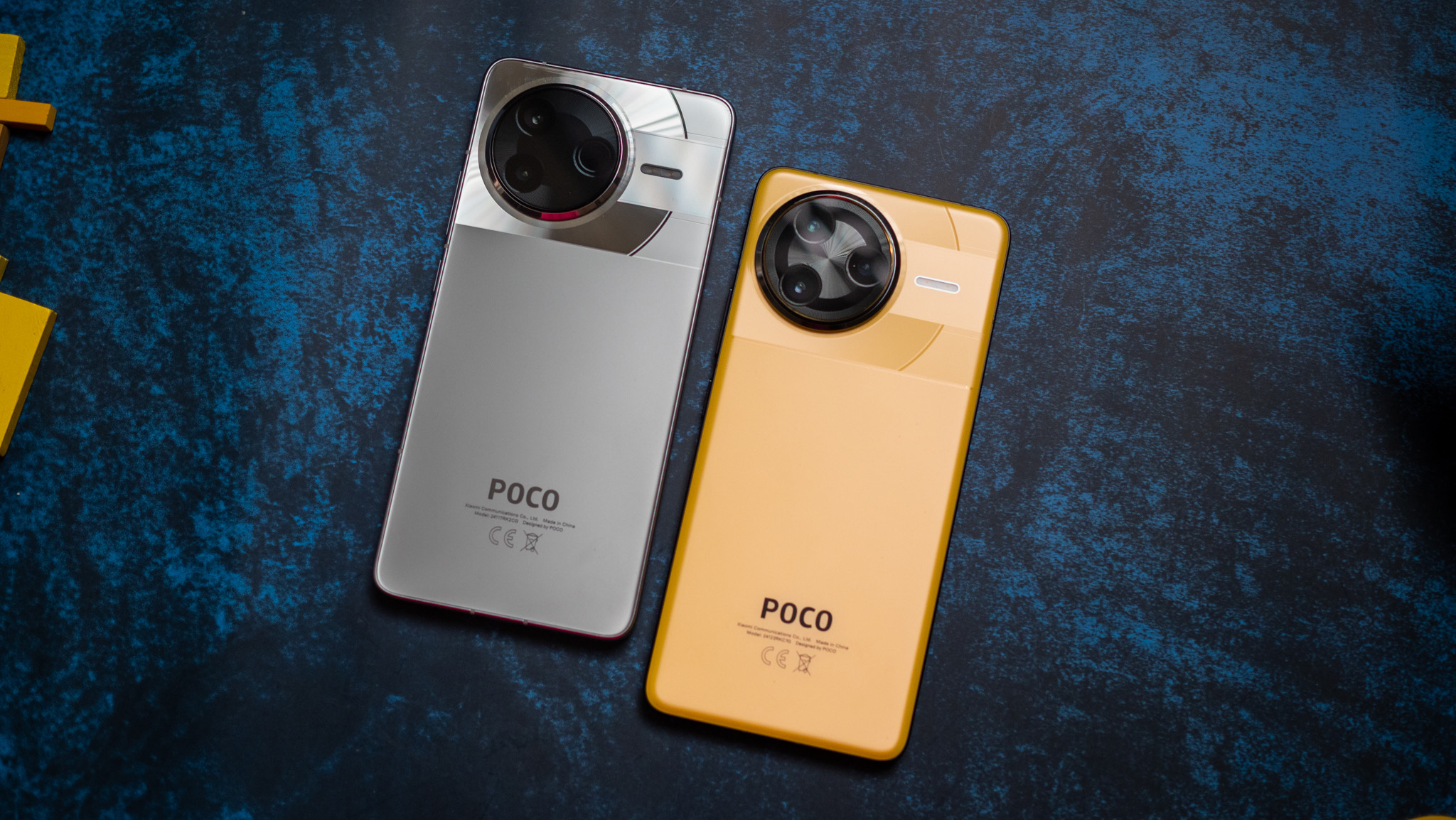
While Xiaomi’s phones now have a semblance of design consistency between generations, that hasn’t trickled down to POCO’s devices. As such, the F7 Ultra has a brand-new design aesthetic that has no resemblance to the POCO F6 or F6 Pro. Thankfully, POCO is using the same design on the F7 Pro as well, so at least both models have similarities — which wasn’t the case last year on the standard POCO F6.
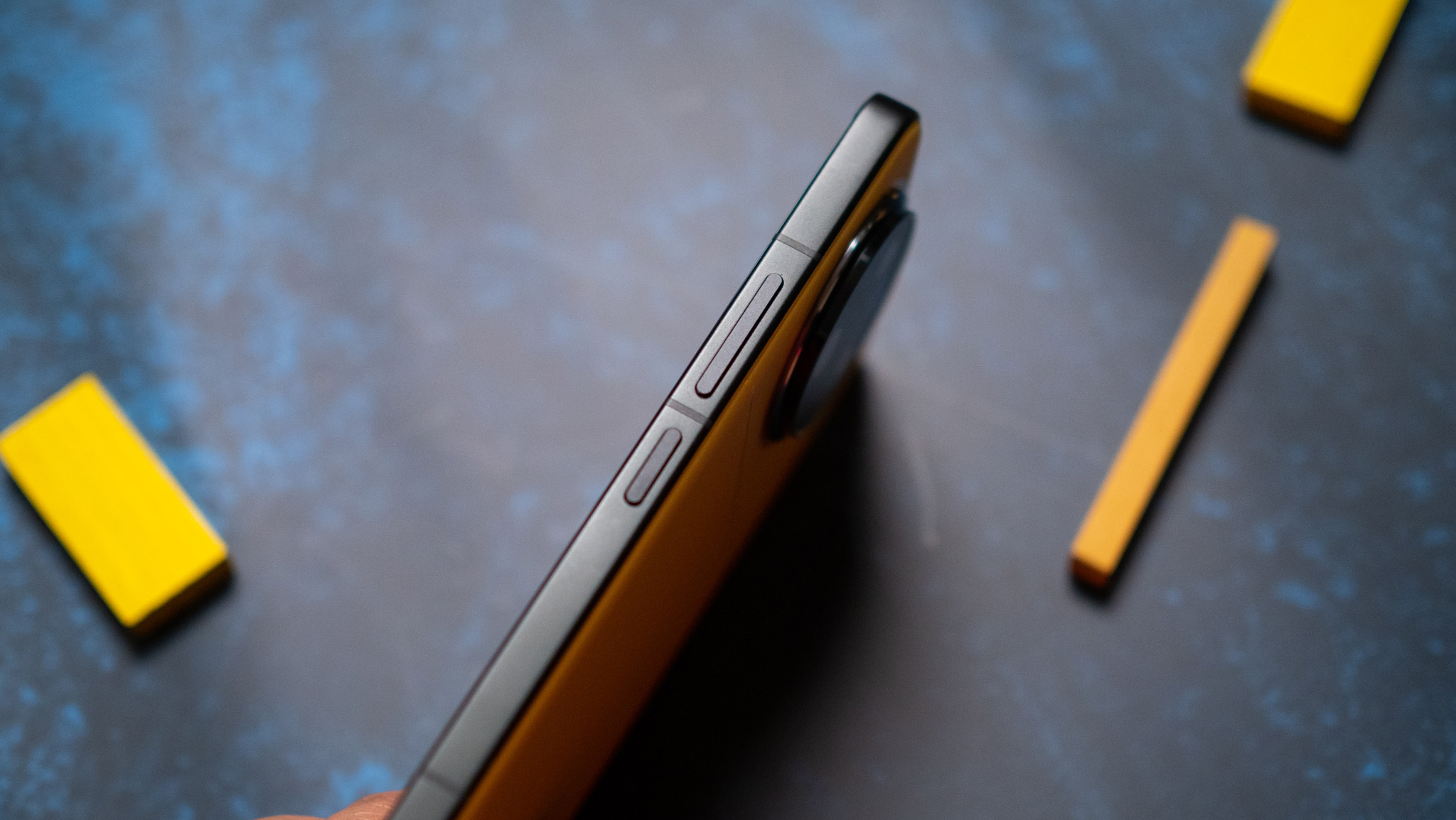
The F7 Ultra has flat sides, but the beveled edges make it comfortable to hold and use the device, and the back curves slightly where it meets the mid-frame. There’s a new design for the camera housing at the back, and it doesn’t quite stand out as much; it’s just a circular design that houses the three imaging modules, with the flash sitting on the right.
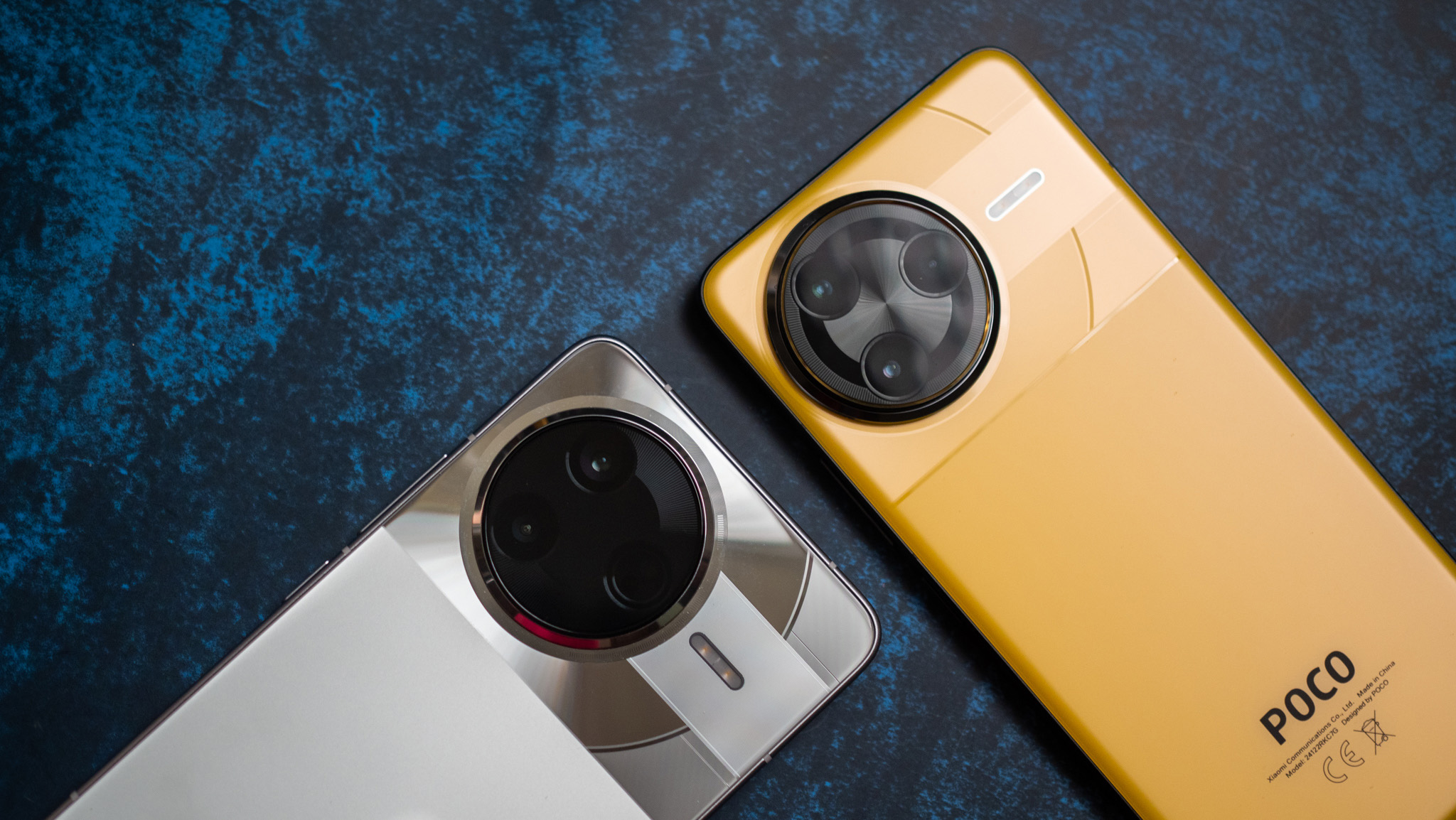
There is a steel ring encircling the camera island, and a yellow accent around the housing that gives it a little flair, but overall, it doesn’t have the same bold characteristics that defined POCO’s previous phones in this series. Talking about bold, the yellow color definitely stands out, and the matte texture at the back has a great in-hand feel, and doesn’t pick up any smudges.

I like the yellow color scheme in general — it makes the device that much more distinctive — and while the back looks great, the sides are rather plain, and I think POCO should have color-matched the sides to deliver a more cohesive design. POCO did that with the F7 Pro, which has a silver back and sides, so I’m not really sure why it didn’t on the Ultra variant.
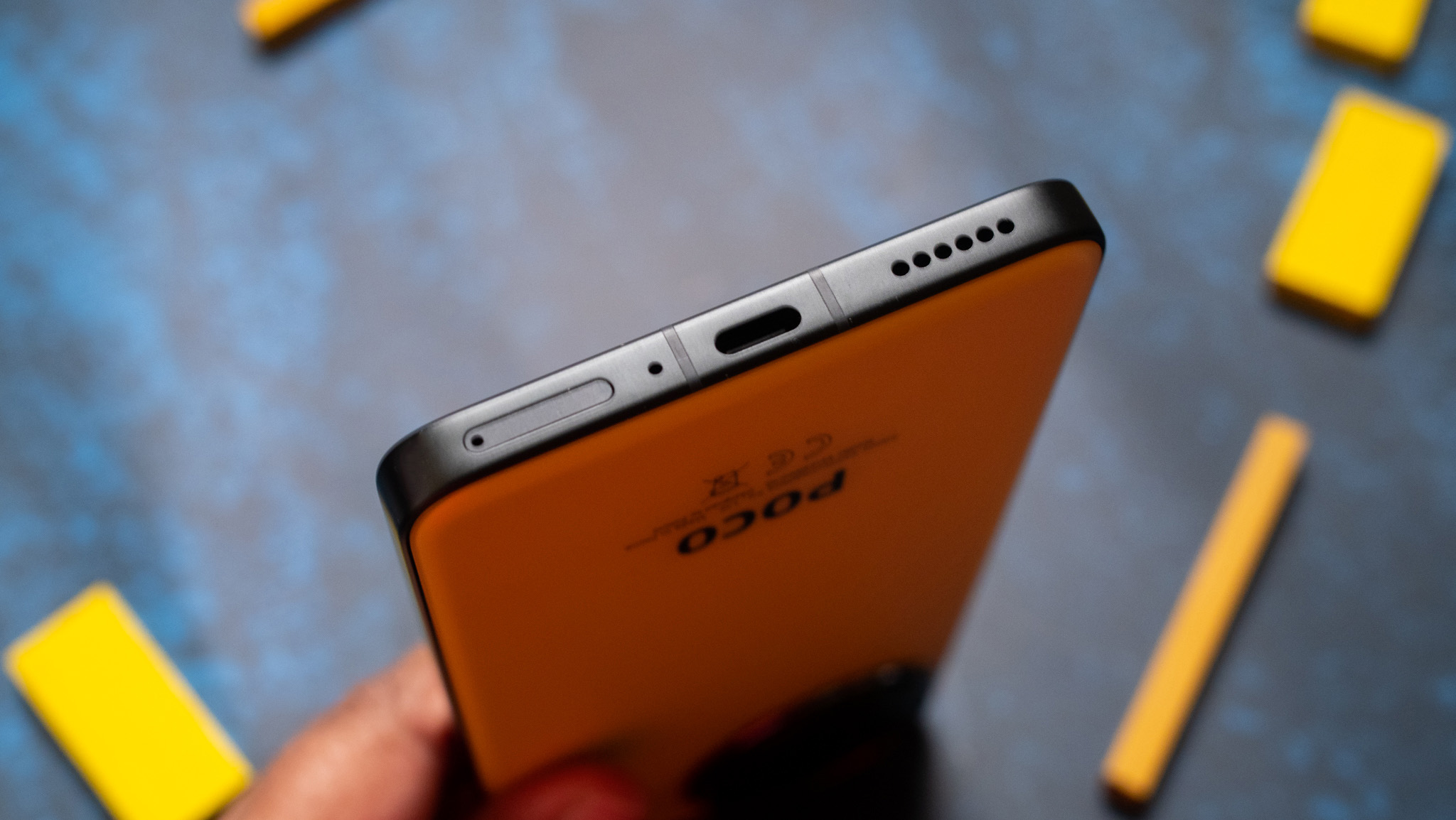
That said, POCO did the right thing by using matte sides, and it makes holding the phone a little easier. The mid-frame is aluminum, and coming in at 212g, the phone has a nice heft to it. There’s good weight distribution as well, and it never once felt unwieldy. The rest of the features are standard; you get a dual-SIM tray, power and volume buttons on the right, and stereo sound.
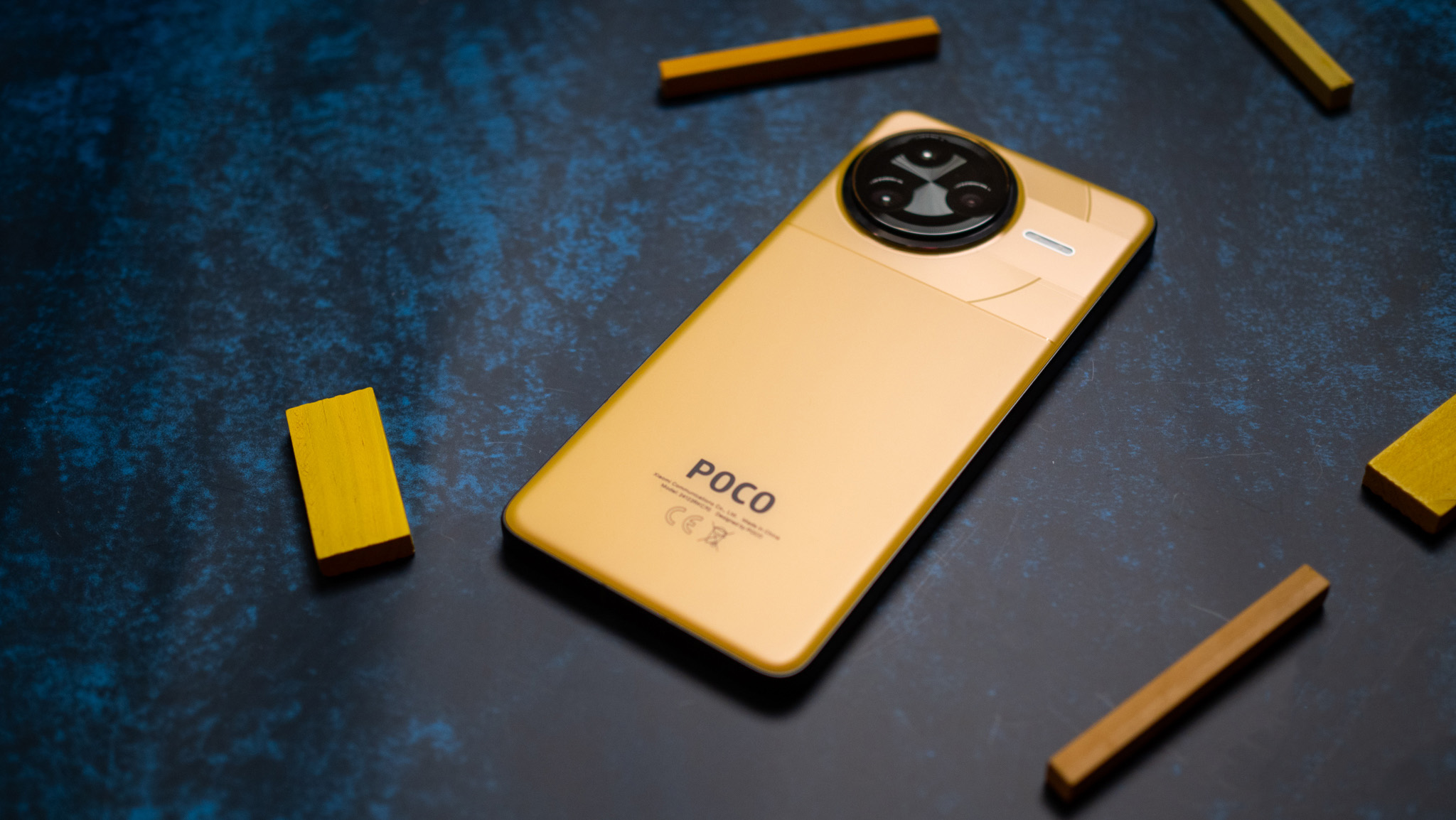
Interestingly, POCO is using an ultrasonic module on the F7 Ultra, and it is located at just the right position. The module is fast and doesn’t have any issues, and it holds up just as well with wet or oily fingers. Rounding out the design, the F7 Ultra gets IP68 dust and water resistance, and it can be easily submerged in up to 2.5 meters of water — higher than the 1.5-meter restriction that’s on most phones.
The F7 Ultra isn’t quite as flamboyant as a few POCO phones I used in the past, but it has a good in-hand feel, and it’s clearly built to last, and that’s what ultimately matters.
POCO F7 Ultra: Display
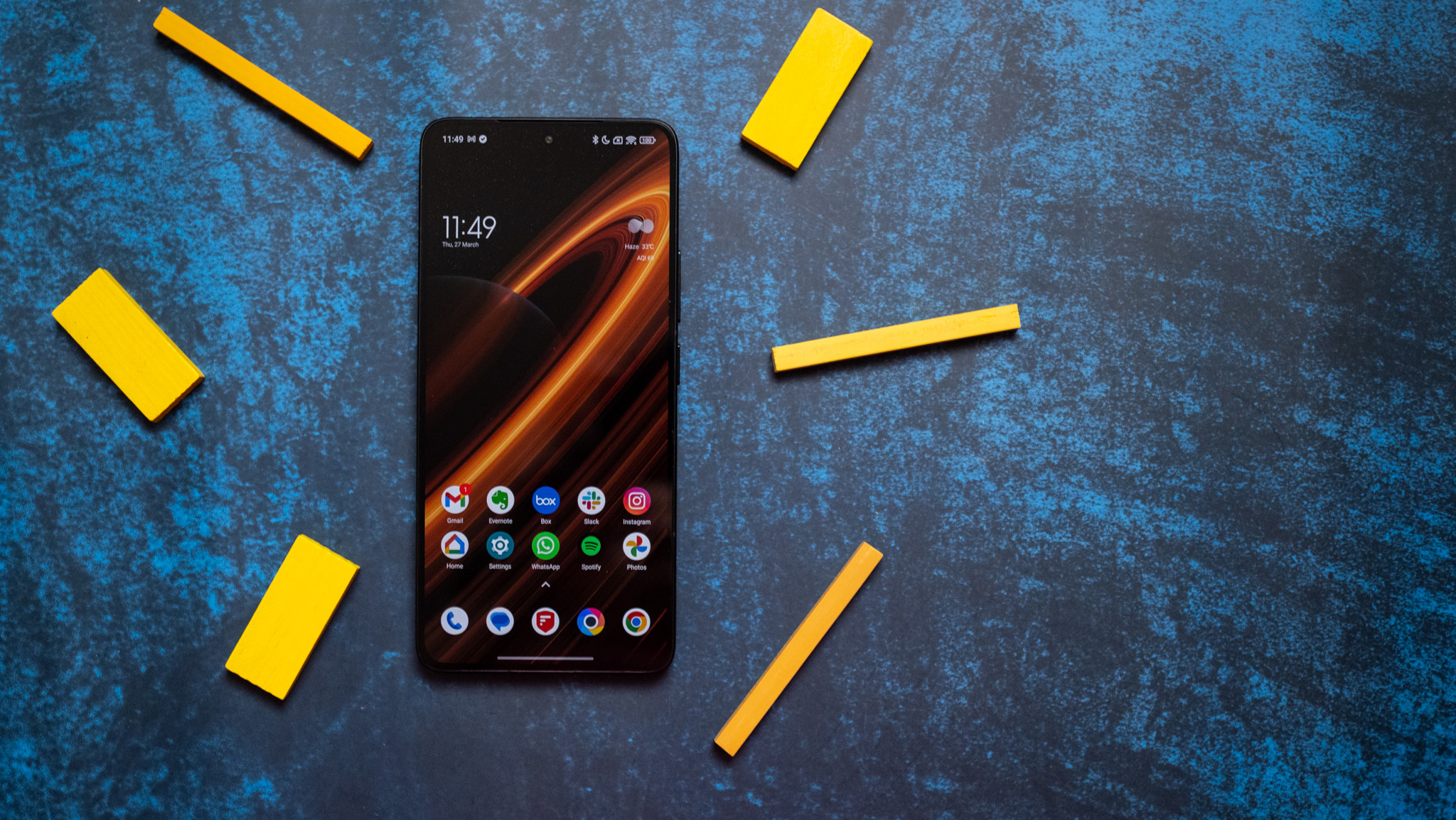
POCO has used 6.67-inch displays for a while now, and that isn’t changing with the F7 Ultra; the phone has the same size and 3200 x 1440 resolution. There’s Dolby Vision and HDR10+, and the panel is noticeably brighter this time — I didn’t see any issues using it outdoors.
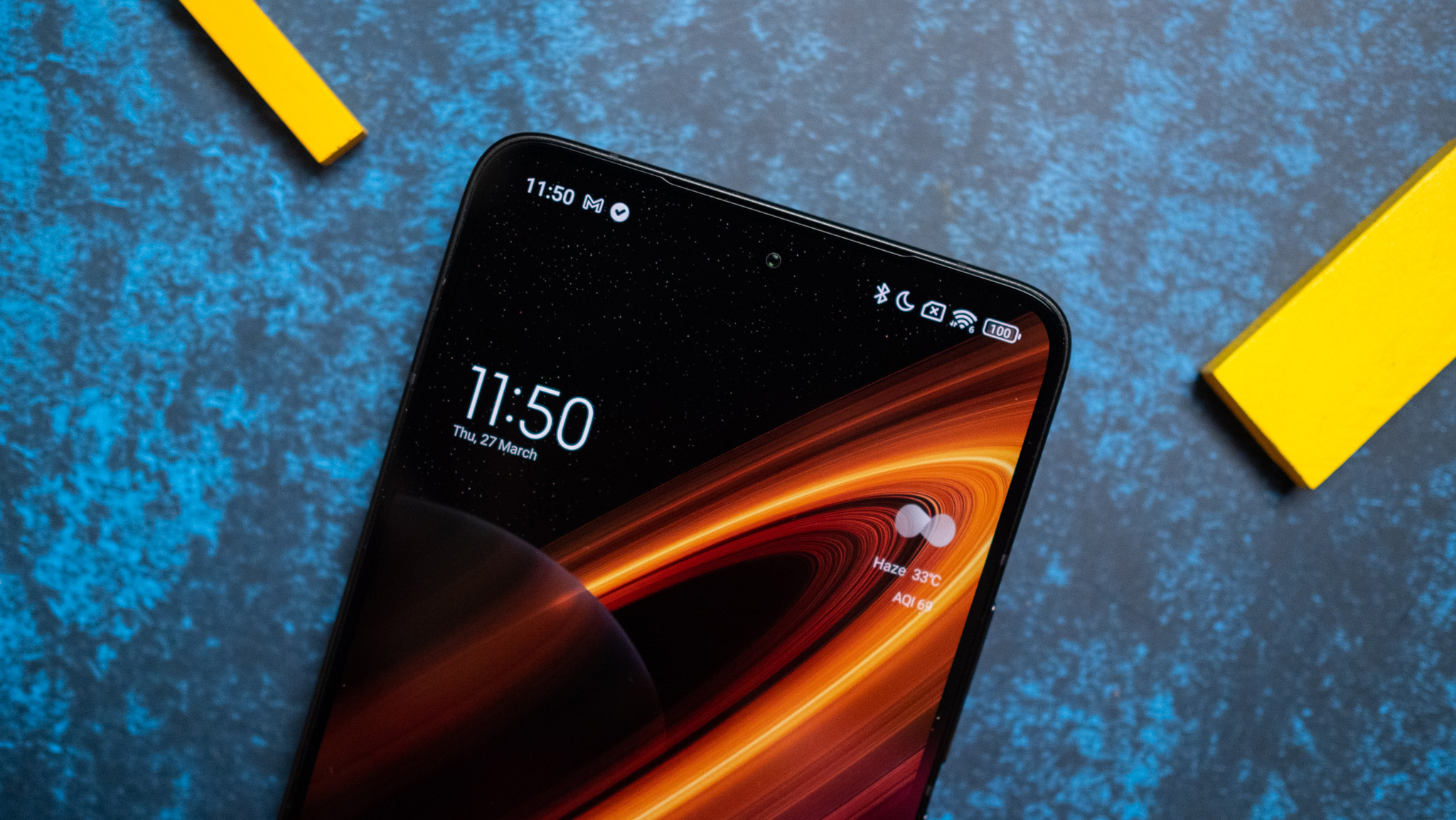
Colors are vibrant out of the box, and POCO knows how to calibrate these panels at the factory. That has always been a plus point on the brand’s devices, and that hasn’t changed. You get good customizability with the colors as well; the Original colour Pro is set out of the box, and the device has Vivid and Saturated modes alongside color-accurate P3 and Adobe sRGB. Of course, you can also adjust the color balance according to your tastes.
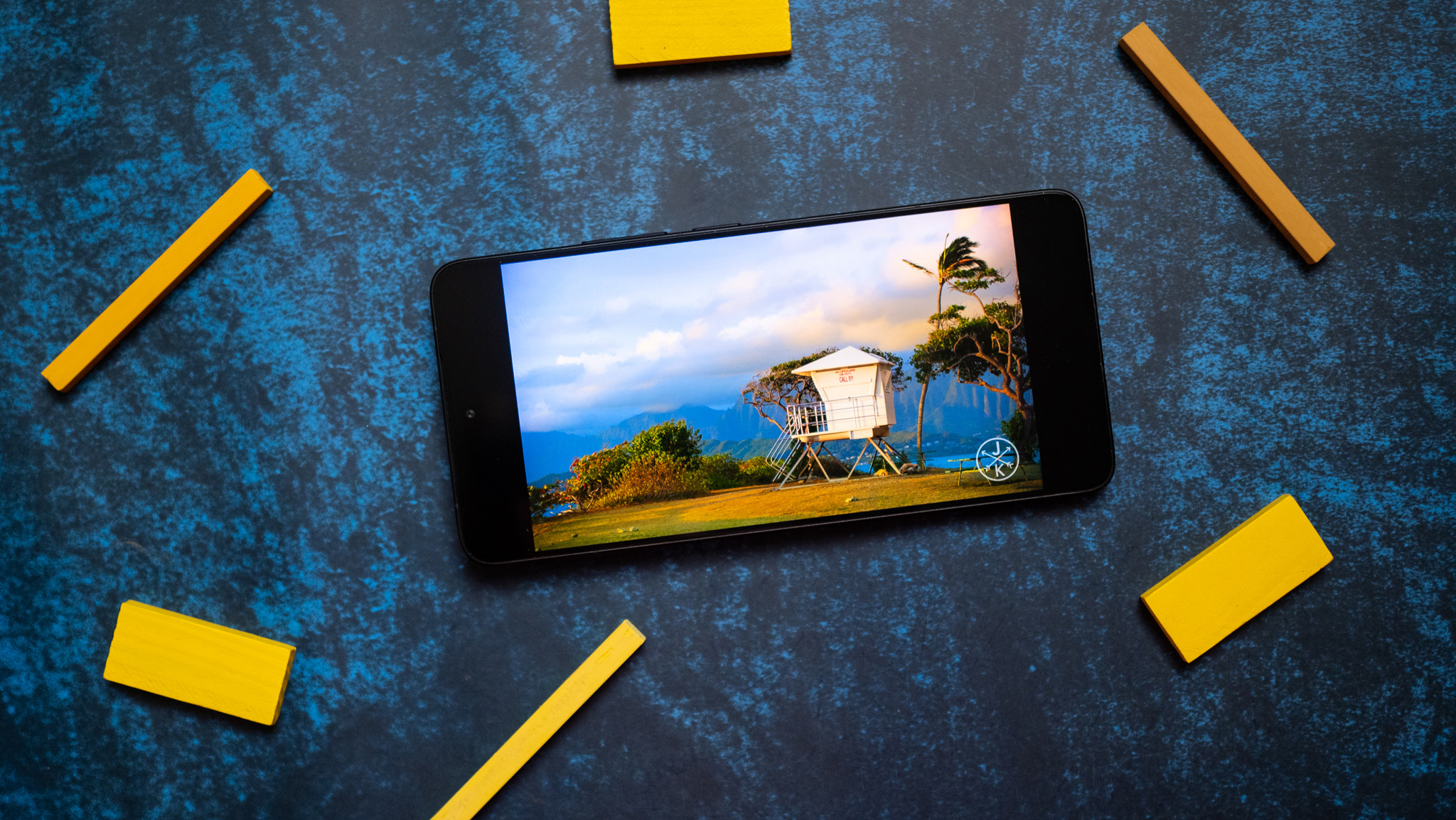
The phone is set to FHD+ and auto refresh out of the box, so you will need to dive into the settings to change these two to QHD+ and 120Hz to make the most out of the device. A new feature that’s debuting this time is circular polarization technology, which delivers a more natural light. It is similar to what Honor did on the Magic 7 Pro, and it is noticeable when using the device next to the F6 Pro.
The F7 Ultra also gets 3840Hz PWM dimming, and this is a welcome move. Xiaomi and other Chinese brands are doing all the right things when it comes to eye care on their devices, and it’s good to see the F7 Ultra get the full suite of features. Xiaomi’s always-on styles aren’t quite as extensive as what you get with ColorOS or Funtouch OS, but you get a decent selection, and you can choose to have the mode enabled throughout the day or set up a custom schedule.
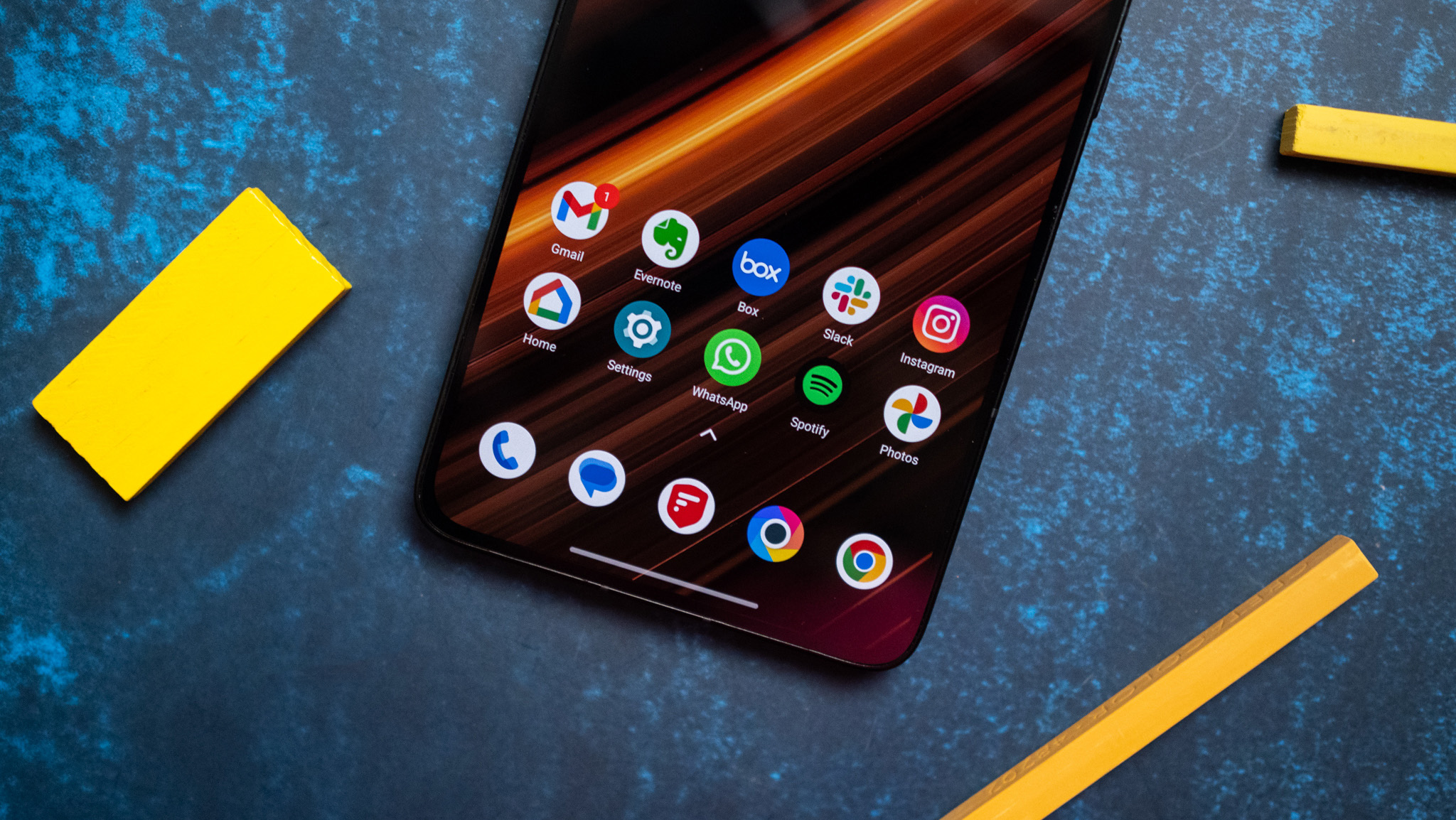
Interestingly, the F7 Ultra gets a dedicated VisionBoost D7 chip that optimizes video playback and delivers smoother visuals while gaming, with POCO positioning 120fps gaming as a clear differentiator. On that subject, gaming is a delight on the device, with the phone able to handle demanding titles without any hassle whatsoever.
It holds up just as well with multimedia content; HDR rendering is handled well, and there’s a noticeable difference to last year when it comes to brightness levels and color fidelity. POCO is using a custom Shield Glass solution — similar to what Xiaomi does on its own devices — and in my use, the phone didn’t have any issues even after several tumbles.
POCO F7 Ultra: Hardware and battery
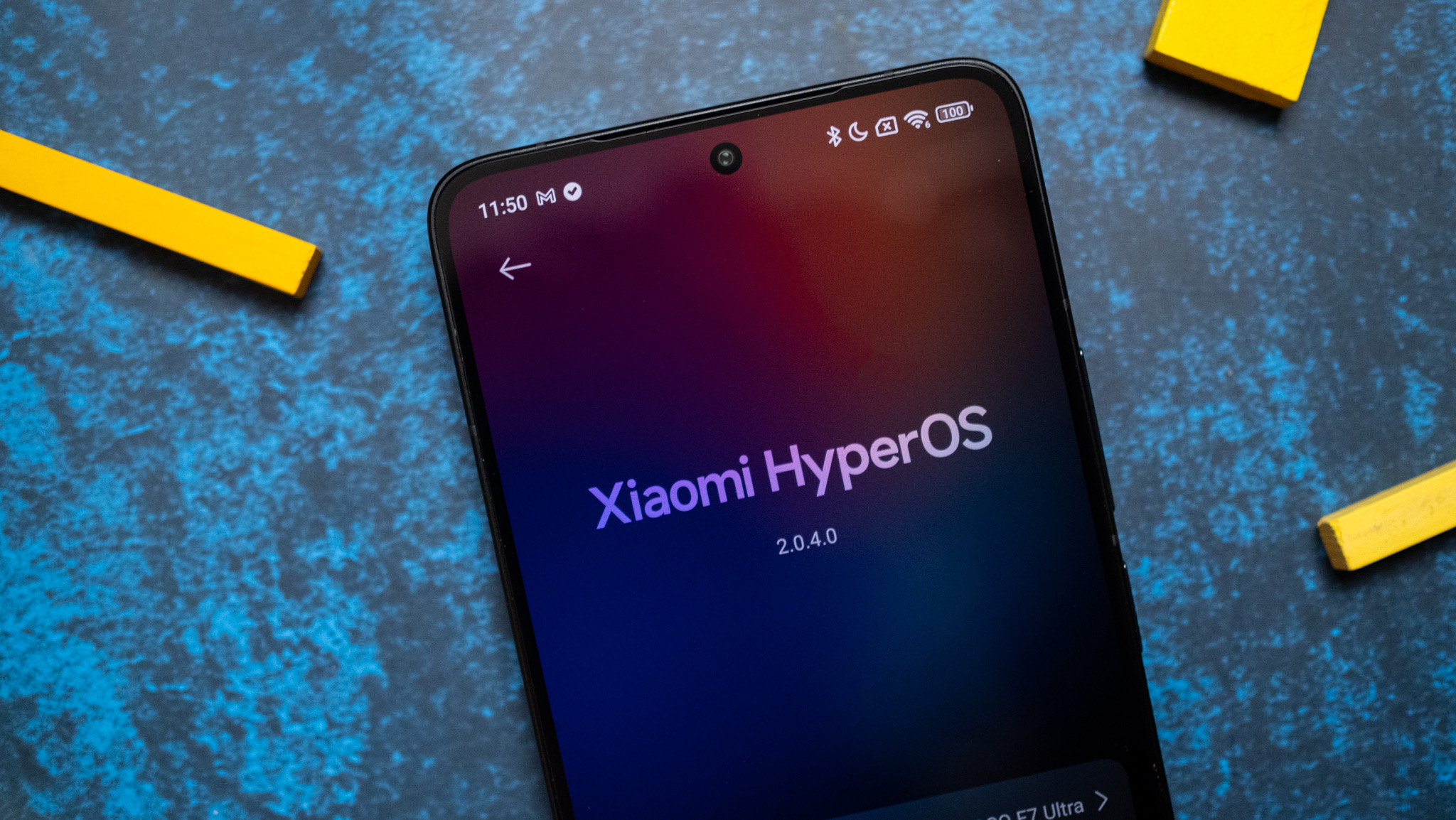
I’ve always enjoyed using POCO’s devices because of the powerful hardware, and the F7 Ultra is in a league of its own. Thanks to the latest Qualcomm silicon, the phone holds its own against the Xiaomi 15 Ultra, Honor Magic 7 Pro, Zenfone 12 Ultra, and OnePlus 13. Similar to those devices, I didn’t see any issues with the F7 Ultra in regular use; the phone handled mundane tasks without breaking a sweat, and even visually-intensive titles didn’t tax the hardware to any noticeable degree.
The hardware tends to run hotter — this is the case with all Qualcomm-powered phones this year — and there is overheating during extended gaming sessions. That said, it doesn’t get so hot as to become uncomfortable to hold. It’s clear that Qualcomm increased power limits this year, and that is evident when using the phone next to previous iterations. The plus side is that you get better gaming performance, with rock-solid framerates.
|
Category |
POCO F7 Ultra |
POCO F7 Pro |
Vivo X200 Pro |
|---|---|---|---|
|
Geekbench 6 (single-core) |
1813 |
2111 |
2381 |
|
Geekbench 6 (multi-core) |
6628 |
6096 |
7175 |
|
PCMark Work 3.0 (Overall) |
17847 |
16217 |
15731 |
|
PCMark Work 3.0 (Web Browsing) |
20993 |
16844 |
13716 |
|
PCMark Work 3.0 (Video Editing) |
8124 |
7899 |
5823 |
|
PCMark Work 3.0 (Writing) |
16805 |
17045 |
24744 |
|
PCMark Work 3.0 (Photo Editing) |
35264 |
30271 |
13582 |
|
3DMark Wild Life Extreme (score) |
5985 |
4160 |
6070 |
|
3DMark Wild Life Extreme (FPS) |
35.84 |
24.91 |
36.35 |
|
3DMark Solar Bay (score) |
7509 |
6182 |
11021 |
|
3DMark Solar Bay (FPS) |
28.55 |
23.51 |
41.91 |
|
3DMark Steel Nomad Light (Stress test) |
2290 (max) / 1624 (min), 70.9% stability |
1359 (max) / 813 (min), 59.8% stability |
2359 (max) / 1169 (min), 49% stability |
|
Geekbench AI (Quantized Score) |
2251 |
2148 |
2436 |
POCO is using the Surge T1S chip to deliver better connectivity, and although I didn’t see any difference when using the F7 Ultra on my home network, it had a stronger signal over cellular data. The phone has Wi-Fi 7, Bluetooth 6.0 — just like the Xiaomi 15 Ultra — NFC, AptX Adaptive, AptX Lossless, and LHDC codecs. In short, you don’t miss out on anything on the connectivity side of things.
The vibration motor is quite good too, and while it isn’t as detailed as the one on the Xiaomi 15 Ultra, it has good feedback when using the keyboard — certainly much better than previous POCO phones.
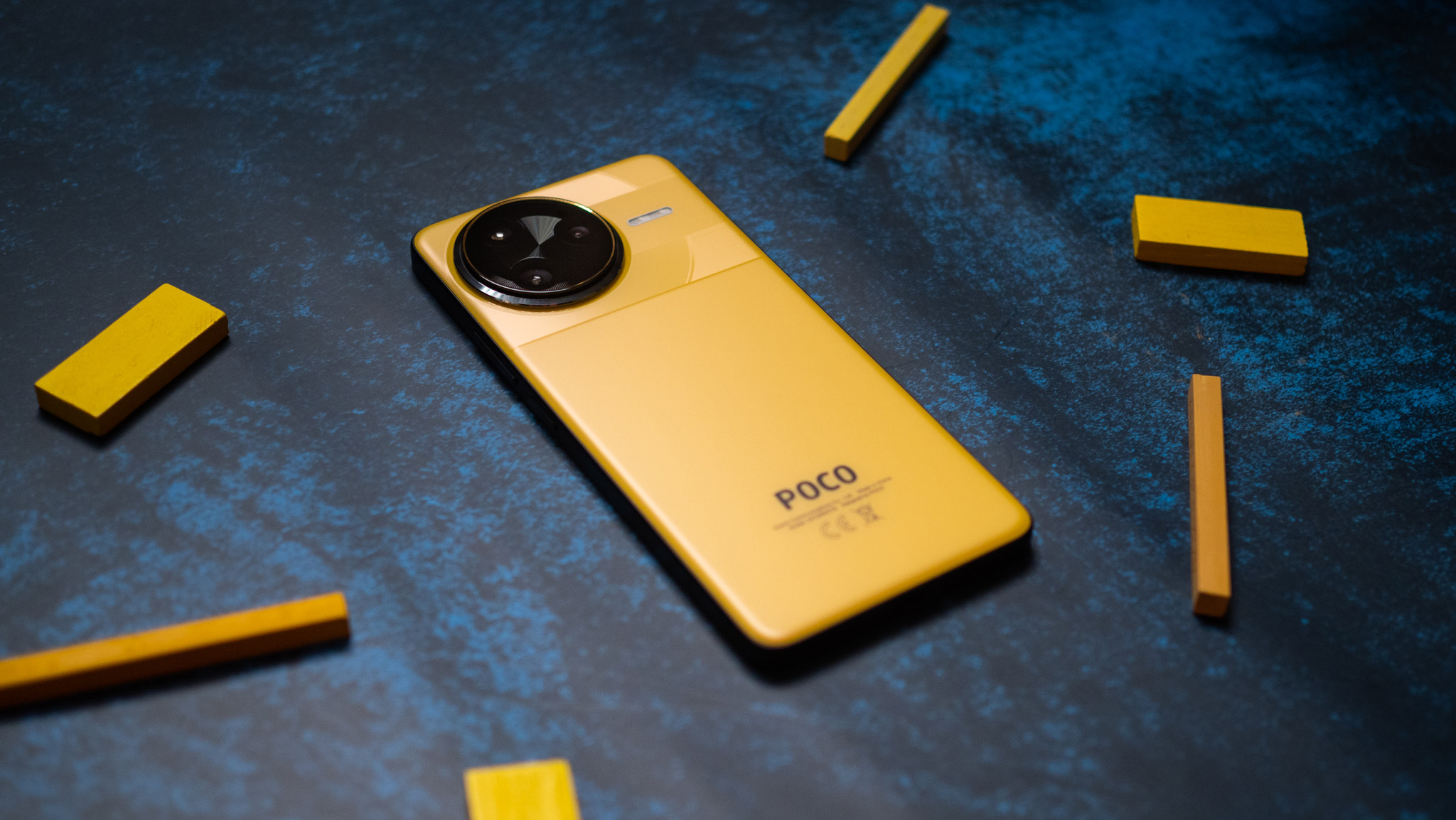
There is a lot to like with the battery as well. The 5300mAh battery easily manages to last a day with relative ease, and even with heavy use, I didn’t have to worry about battery running out before the end of the day. POCO is also using silicon battery tech this time, and it allows the brand to deliver a bigger battery in a smaller size — always a good thing.
The phone gets 120W charging, and it takes 38 minutes to charge the battery. You’ll need to enable the Boost charging mode to unlock 120W charging, with the phone using 90W in regular use. Overall, this is the best hardware package in the sub-$800 category, and like previous years, POCO absolutely dominates the value.
POCO F7 Ultra: Cameras
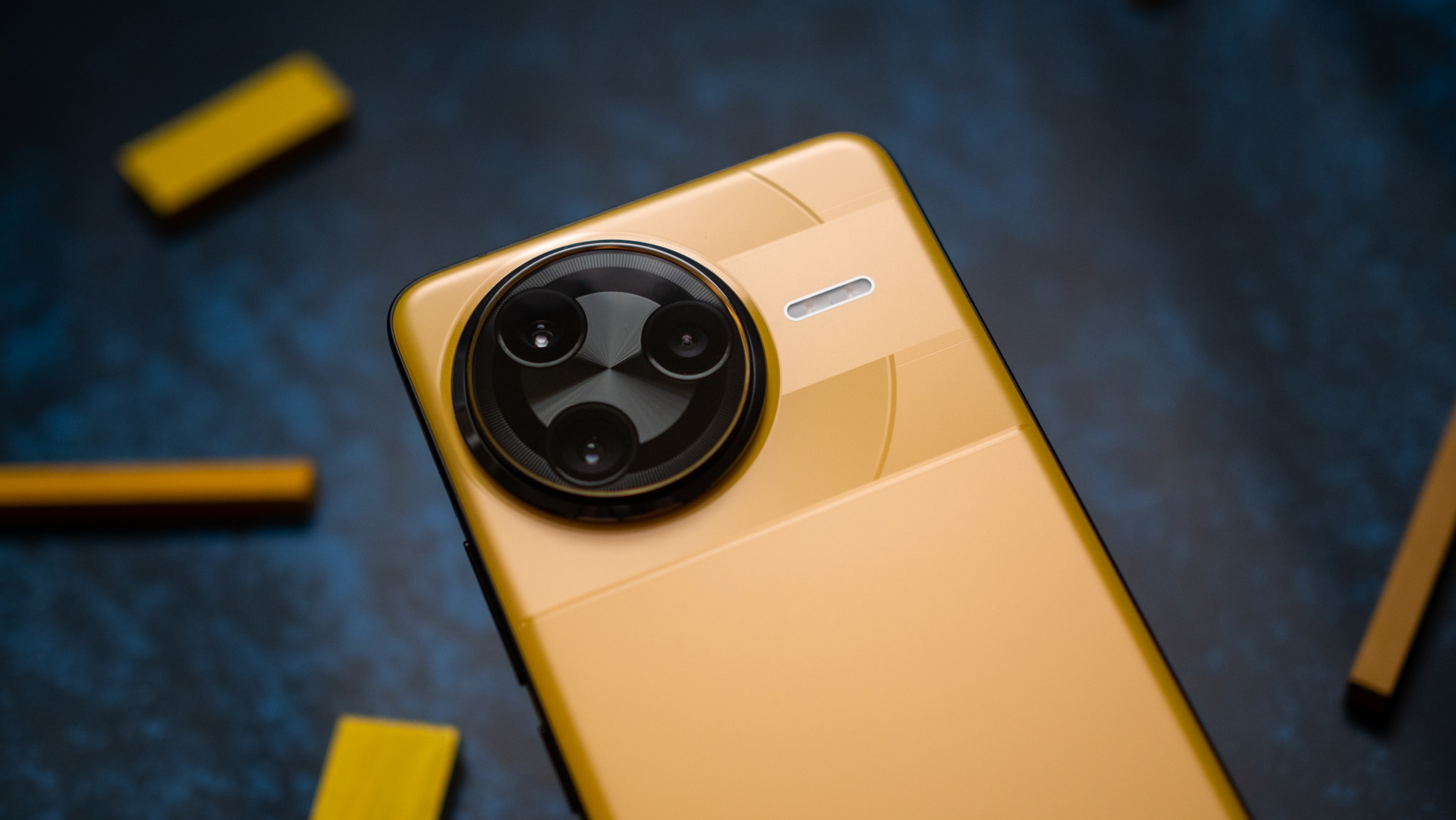
POCO was always upfront about the cameras on its phones; while its devices did a decent enough job, imaging just wasn’t a priority for the brand. That’s thankfully changing with the F7 Ultra; the phone has the same 50MP Light Fusion camera as last year, and it’s using the same OmniVision OVX8000 module with OIS. What’s different is the auxiliary lenses; there’s now a 50MP Samsung JN5 tele lens with 2.5x optical zoom and OIS, and a 32MP wide-angle lens.
Just with the addition of the auxiliary lenses, the F7 Ultra has the best camera package of any POCO device by a considerable margin. Video shooting is much better too; you get 8K24 in addition to 4K60, and video quality is leagues better than earlier POCO phones. The camera interface hasn’t changed much, so if you’ve used a Xiaomi or POCO phone in the past, you’ll know your way around the viewfinder.
Daylight photos taken with the F7 Ultra have good detail and color rendition, and there are absolutely no issues in this regard. While it is using the same module as last year, changes to the tuning mean you get much better shots, and this is evident in low-light and challenging scenarios. In short, the phone doesn’t have any shortcomings when it comes to the main camera, and it does a brilliant job in this regard.
While the auxiliary lenses aren’t as good, they’re much better than any other POCO phone I used until now. The phone delivers clean photos at 2.5x and usable shots up to 5x, and wide-angle shots have good colors. The wide-angle lens has its drawbacks in low-light situations, but on the whole, this is a vastly better showing than previous years.
Ultimately, the F7 Ultra doesn’t quite measure up to the OnePlus 13, Find X8, Vivo X200, and Xiaomi 15, but the cameras don’t feel like a limitation any longer — that in itself is a huge deal.
POCO F7 Ultra: Software
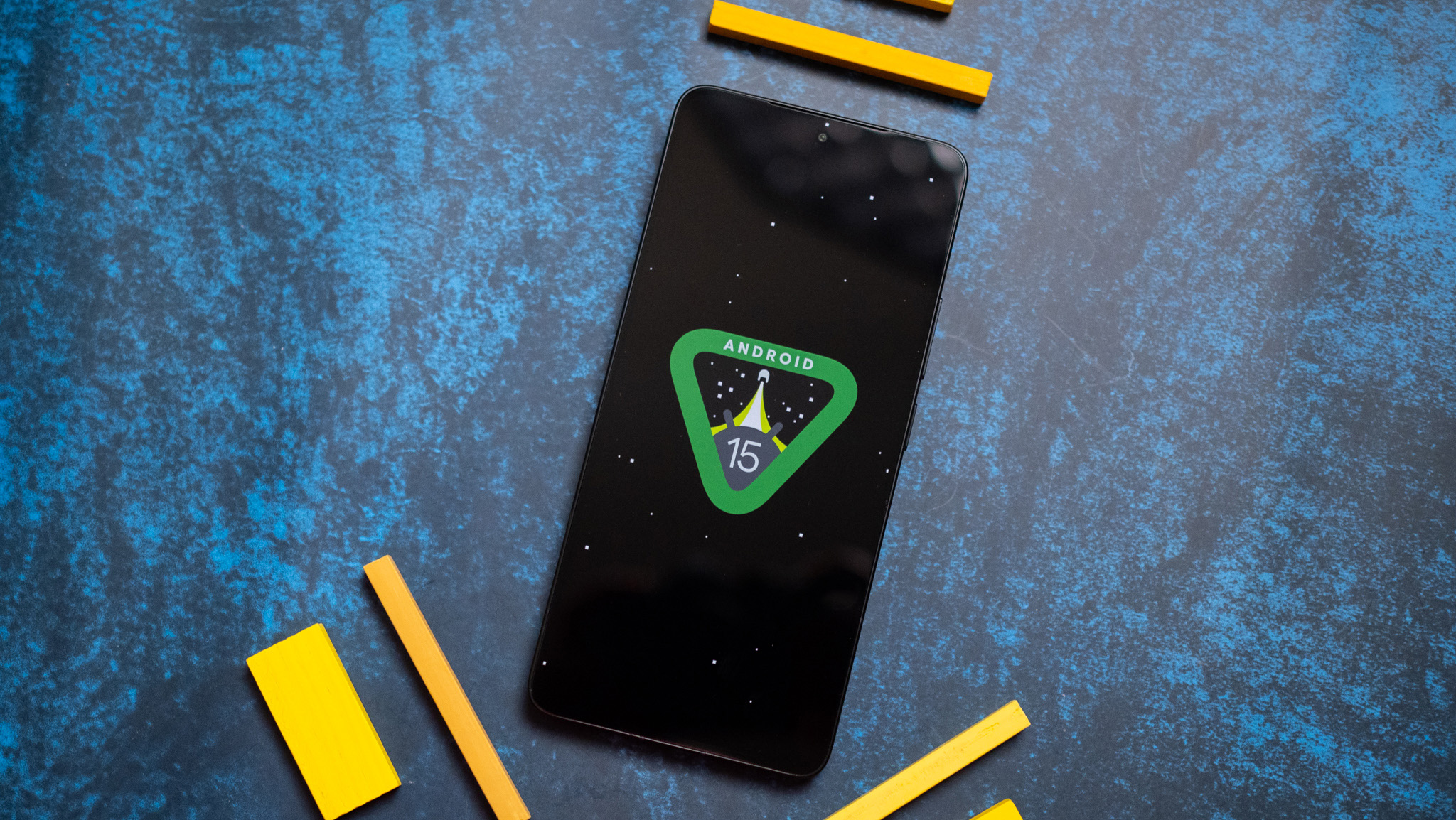
There isn’t much to talk about on the software front; the device features HyperOS 2.0.4.0 out of the box, and it uses Android 15 as the foundation. As I used the Xiaomi 15 Ultra before switching over, the software is pretty much identical; POCO does a few things differently when it comes to icons, but other than that, it is the same software as every other Xiaomi phone.
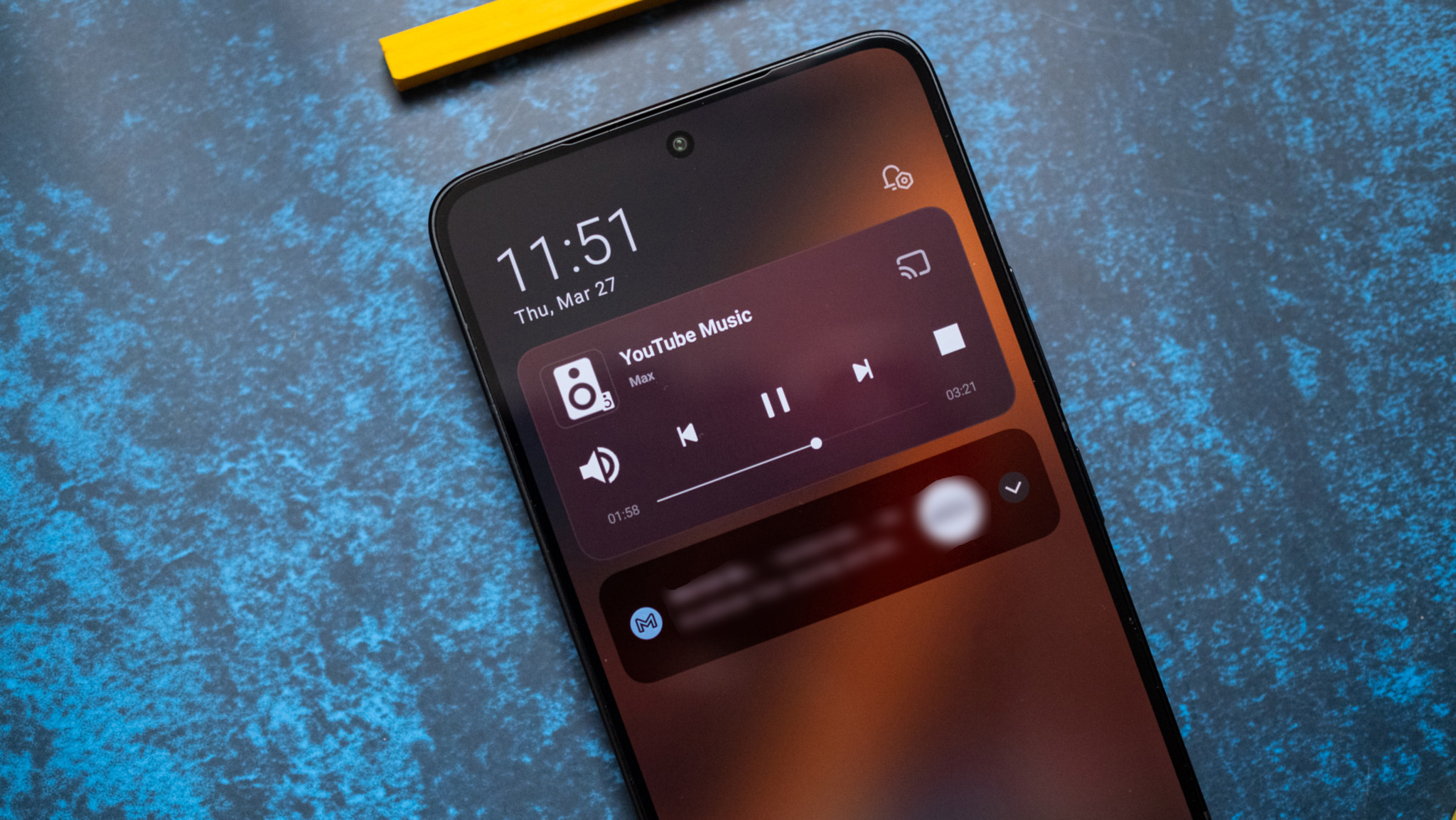
Although the interface itself hasn’t changed too much over the last two years, it has better fluidity, and that is immediately noticeable when using the F7 Ultra against older POCO phones. I still don’t like the split notification pane, but I’m used to it by now, and it is easily customizable. The software itself has plenty of customizability in general, and that’s thankfully something that hasn’t changed on POCO’s phones.
There is still some bloatware, but nowhere as much as years past, and it can be easily uninstalled. POCO says it will deliver four Android OS updates alongside six years of security updates to the F7 Ultra and F7 Pro, and that is good to see. While it isn’t quite as much as what Google, Samsung, and Honor deliver, it is still a decent move. That said, the device isn’t likely to get Android 16 well after its release; POCO takes its time to roll out software updates, and it needs to change that.
POCO F7 Ultra: The alternatives
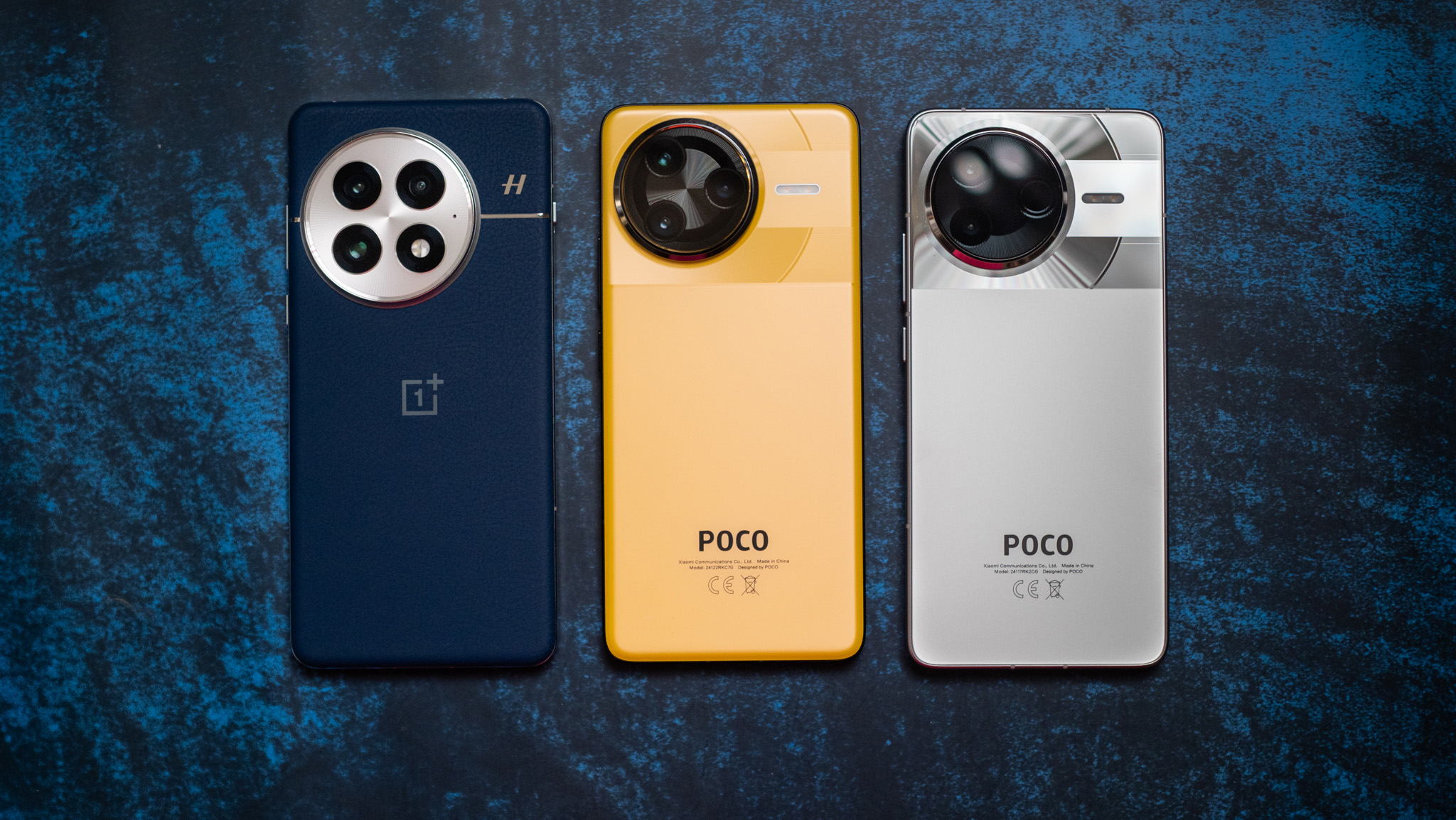
The best alternative to the F7 Ultra is the F7 Pro; the phone has the same design, same panel, same main camera at the back, and same software. The auxiliary cameras aren’t anywhere as good, and while it isn’t quite as fast, you don’t notice any difference even while gaming. As a bonus, the F7 Pro has a bigger 6000mAh battery, and even though it gets 90W charging instead of 120W, you’re not actually missing out much. All things considered, the F7 Pro is a fabulous value at $499.
I like the OnePlus 13 a lot; it has one of the best camera packages in this category, and the design is stunning. Coming in at $899, it is $250 costlier than the F7 Ultra, and I’d suggest getting it if you need better cameras; otherwise, the F7 Ultra is a better choice in most areas.
POCO F7 Ultra: Should you buy it?
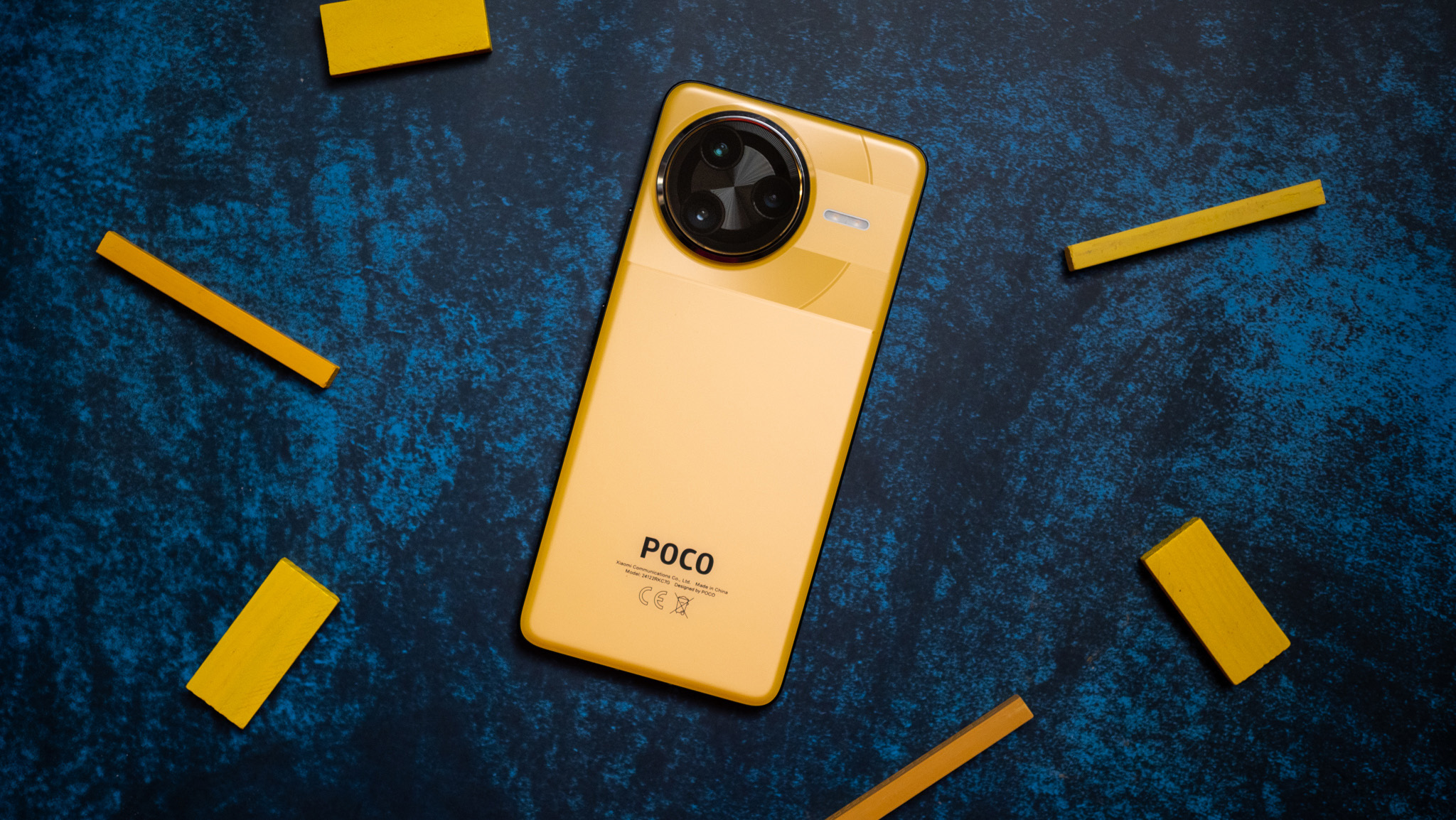
You should buy this if:
- You need a phone with the latest hardware
- You want decent cameras at the back
- You need a high-end phone with the best value
- You need reliable battery life
You shouldn’t buy this if:
- You need timely software updates
- You want the best cameras
POCO did it once again — the F7 Ultra is proof that you don’t need to shell out a ridiculous amount of money to get a great phone. The phone loses some of the flamboyance that characterized POCO devices in the past, but that’s ultimately a good thing; it looks much more like a mainstream phone now.
The hardware is a clear differentiator; this is the most affordable way to get your hands on the latest Qualcomm silicon, and that in itself is highly alluring. Combine that with a high-quality OLED panel and all-day battery life with 120W charging, and the F7 Ultra nails the basics.
It also has the best cameras of any POCO phone yet. I know that doesn’t mean much as the brand didn’t prioritize imaging in the past, but it definitely makes a difference, and it gives the F7 Ultra a sizeable lead over its predecessors. POCO still has a way to go before it can measure up to OPPO, Vivo, Honor, and OnePlus, but this is a big step in the right direction.
Ultimately, there isn’t much to criticize with the device. POCO did all the right things with the hardware and cameras, and while the software isn’t quite as good, there’s no denying that the F7 Ultra is a definite bargain. If you need the best value while still getting flagship internals, the F7 Ultra is the phone to buy in 2025.


